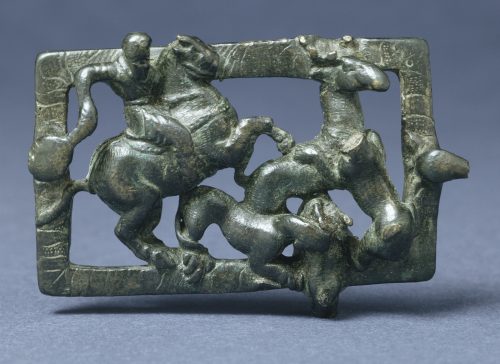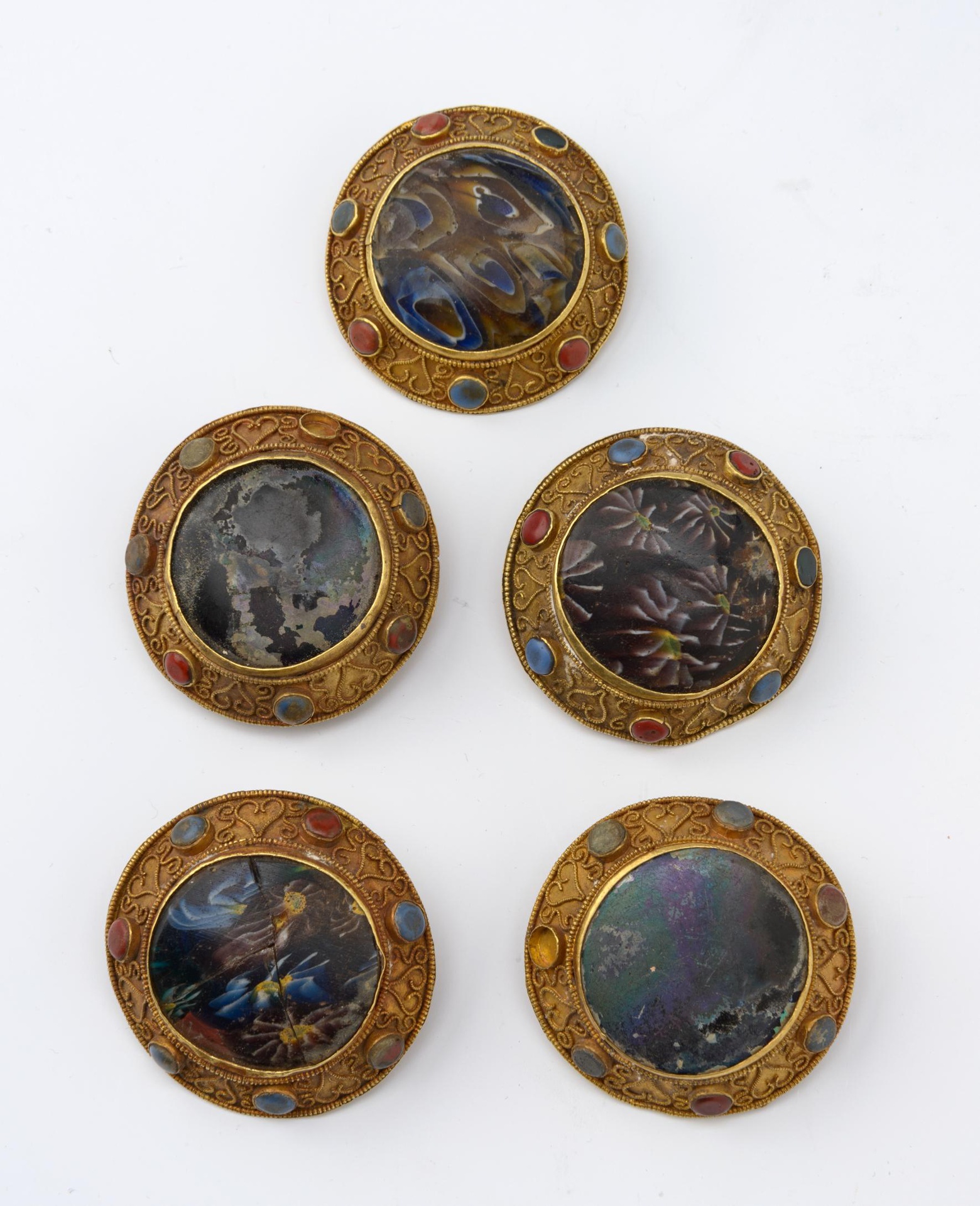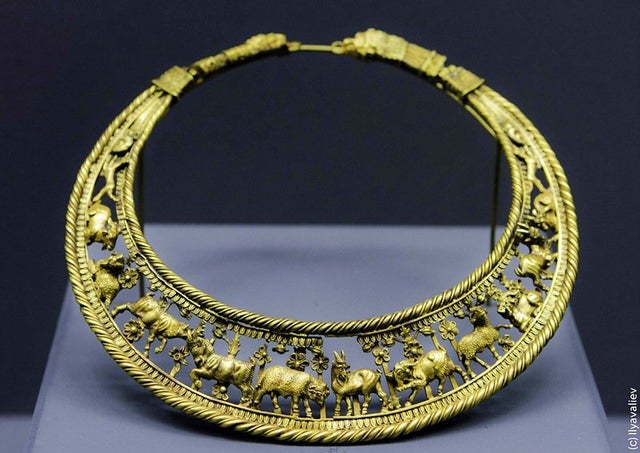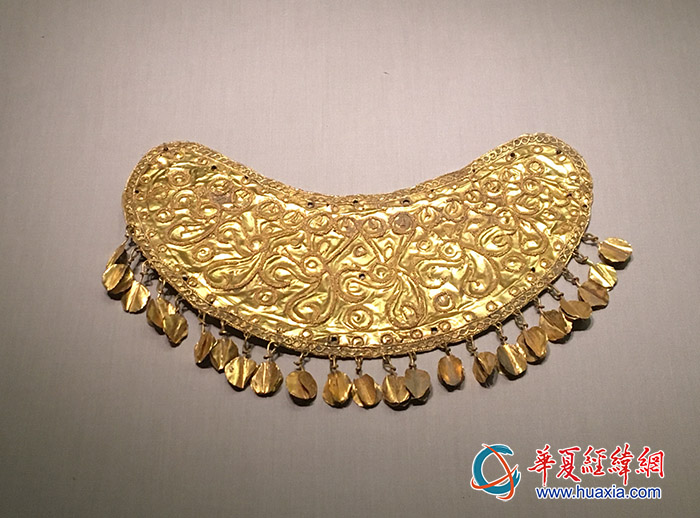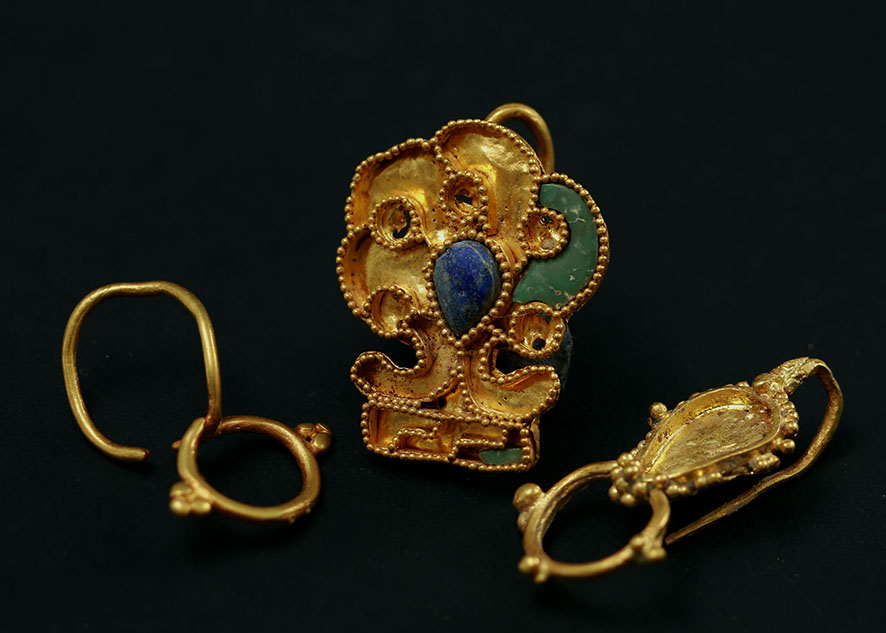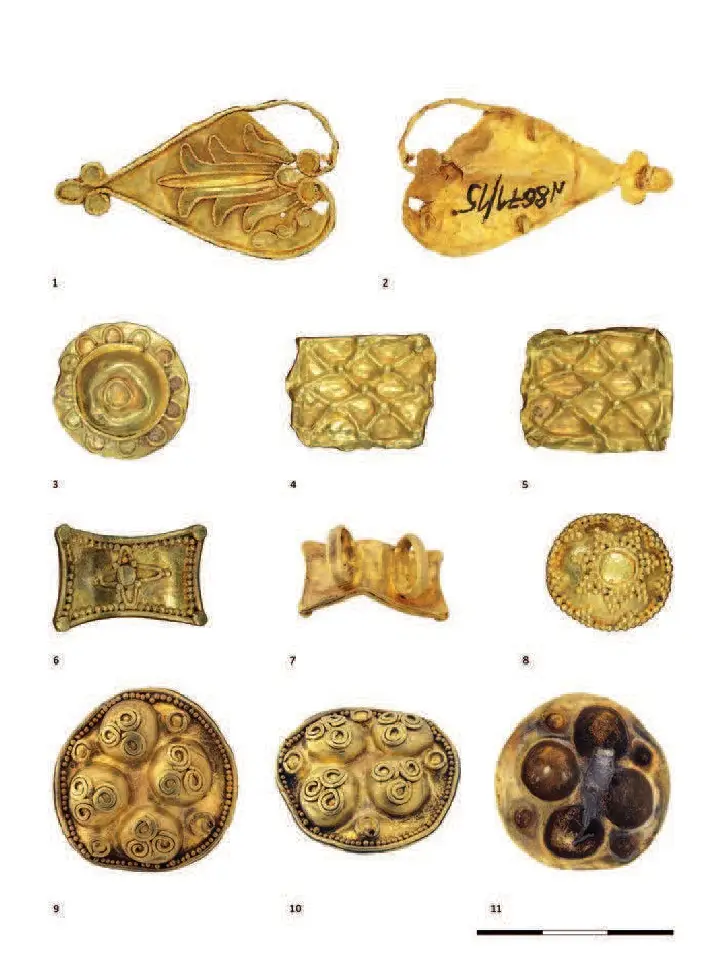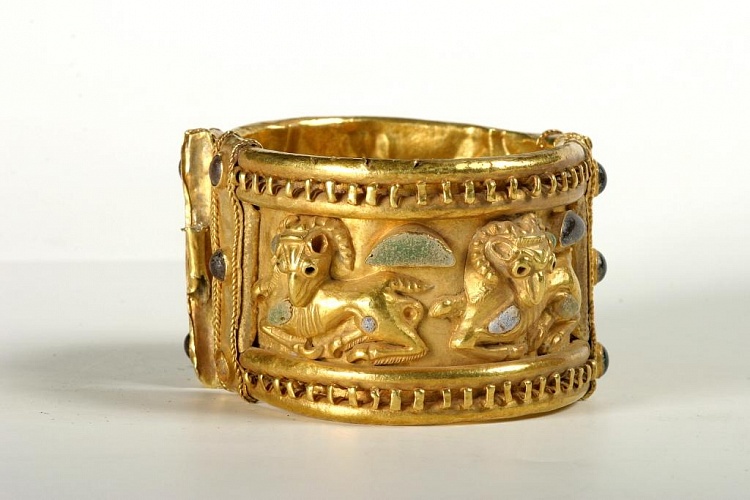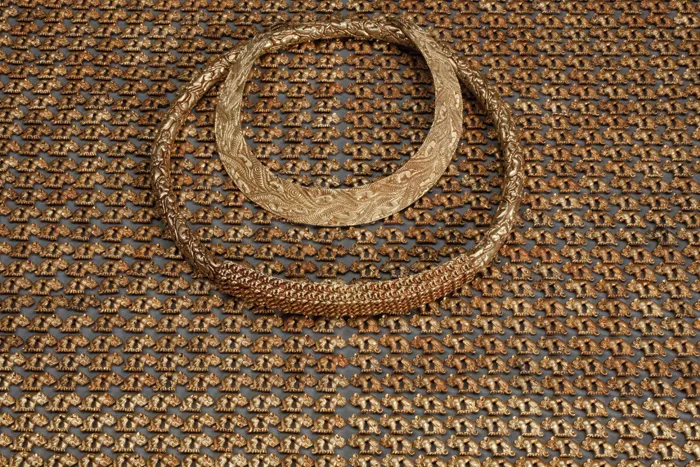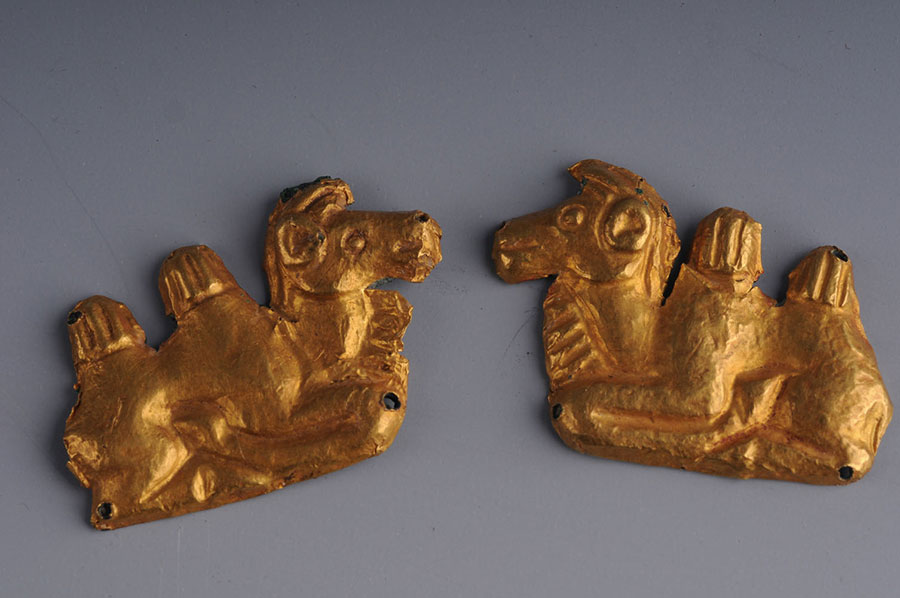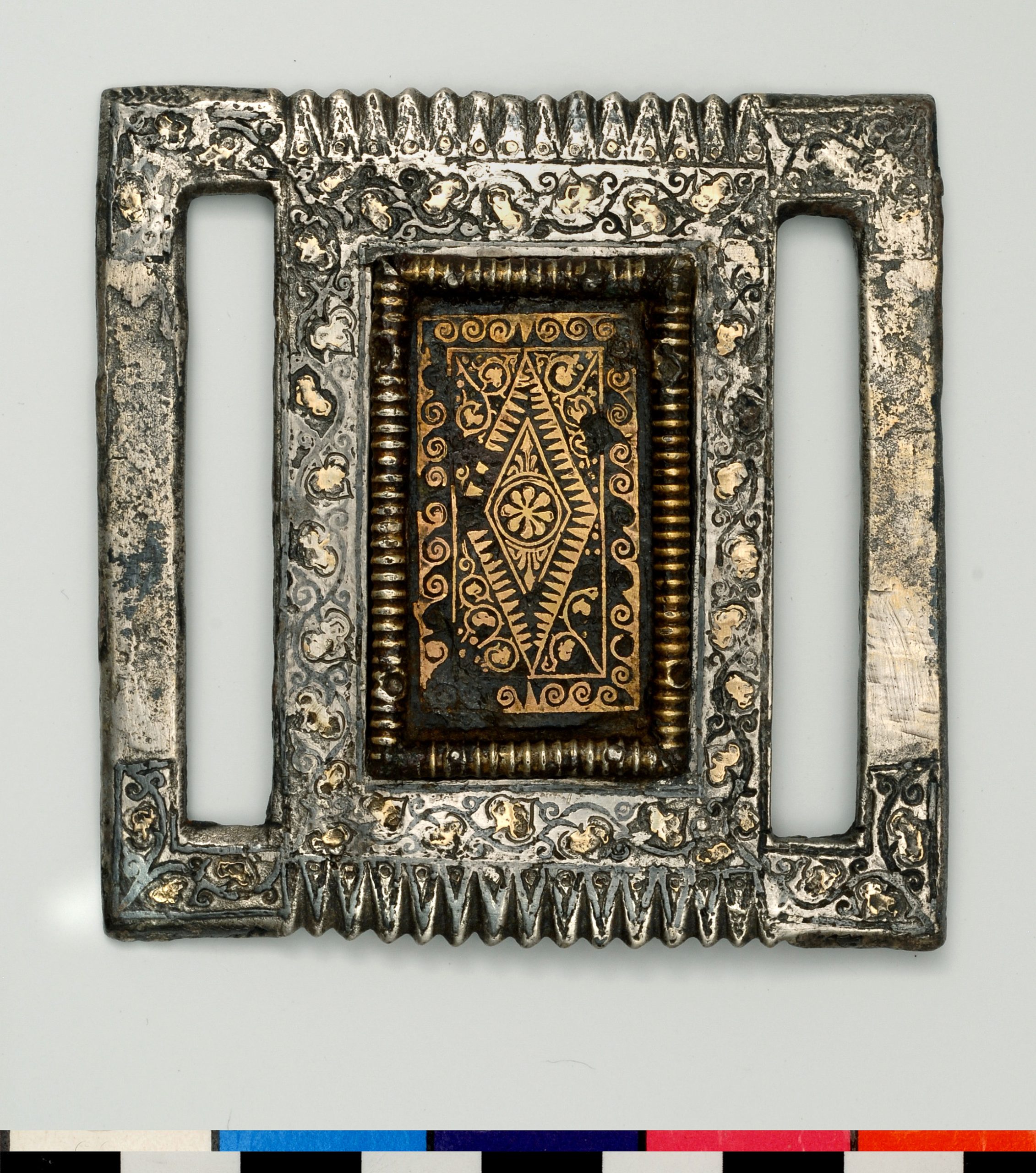Belt Buckle (Horseman)
Iran, circa 150 BCE – 225 CE
Bronze; 4.5 x 7.2 cm
The Nasli M. Heeramaneck Collection of Ancient Near Eastern and Central Asian Art, gift of The Ahmanson Foundation (M.76.97.592)
BIBLIOGRAPHY
Thomas, Nancy. “Nasli M. Heeramaneck.” In American Collectors of Asian Art, edited by Pratapaditya Pal, 73-92. Bombay: Marg Publications, 1986.
Ancient Bronzes, Ceramics, and Seals: The Nasli M. Heeramaneck Collection of Ancient Near Eastern, Central Asiatic, and European Art. Los Angeles: Los Angeles County Museum of Art, 1981.






The golden belt buckle from Tajikistan, Saksanokhur, dates from the 1st to 2nd century CE (the Kushan period), shows a rider who is about to deal the death blow to a boar. The frame is provided with an egg dart motif and was originally decorated with inlays. source >>
The exhibition Alexander der Große und die Öffnung der Welt website >>
Description from Paris, Musée Guimet:
Buckle with boar hunting scene, 2nd-1st century BCE. Tajikistan, Saksanokhur – National Museum of Antiquities of Tajikistan (Dushanbe)
Length 5.2 cm, width 5.4 cm, thickness 2.4 cm
source >> https://www.artoftheancestors.com/blog/tajikistan-musee-guimet
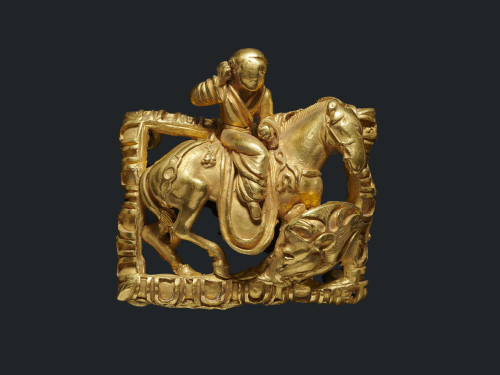

[source]
Astrakhan province, Enotaevsky district. S. Kochkovatka (random find). Sarmatian culture
1st century BCE -1st century CE
Length: 5.7 cm; width: 4.5 cm

Gold belt plate / buckle, with a relief image of a feline predator crouching on its front paws. In the center of the plaque, made in the Sarmatian polychrome animal style [gold and turquoise], is the figure of a man of the Mongoloid type, fighting with the beast or sitting on it. On three sides of the plate, the image is surrounded by a border of pentagonal scallops. On the head, torso and paws of the animal, as well as in other parts of the plate, nests of non-preserved colored inserts are visible. [Museum description]
Goddess Riding Leocampus Mount
Gold ornament sold on auction in UK in 2020 [https://www.liveauctioneers.com]
“Late 1st millennium BC. A gold ‘Sarmatian Animal Style’ disc mount with band of inset turquoise triangular inserts to the rim.”
Four loops are soldered to the reverse. 74.41 grams, diameter 6.4 cm

“a goddess, possibly Artemis, riding sidesaddle on the back of a leocampus with its fish-tail raised and mouth gaping, piriform cell before the face. Property of a London gentleman; previously acquired on the UK art market in the 1990s; accompanied by an independent specialist report and valuation by graduate gemmologist and jewellery expert Anna Rogers, GIA GG, BA, Gem-A, ref. no.163592/1/9/2020; this lot has been checked against the Interpol Database of stolen works of art and is accompanied by AIAD certificate number no.163592-10059.
Literature The term ‘Sarmatian Animal Style’ first suggested by Prof. M. Rostovtzeff in 1920’s to make it distinct from the well-known Scythian Animal Style. Rostovtzeff described “Sarmatians” as new Iranian-speaking people, who came to the Northern Black Sea region from the east, apparently from the northern boundaries of ancient Bactria, and subdued the Scythians. The most distinctive feature of the style is the polychromy produced by the colour inlays. The majority of depicted figures are fantastic beasts of prey with bodies constructed from different parts of animals, usually shown as symbolic antagonists, representing different parts of the universe; also cf. ‘Mistress of Animals’ plaque in Hampe, R. and Simon, E., The Birth of Greek Art. From the Mycenaean to the Archaic Period, Fribourg, 1981, pl.354, for type. The leocampus was a mythical beast with the foreparts of a lion and the tail of a fish. It appears infrequently but is represented on a mosaic at the Baths of Neptune, Ostia, Italy. Artemis was the goddess of the hunt, the wilderness, wild animals, the moon, and chastity. Her worship was widespread in Greece and in the colonies such as Ephesus in modern Turkey. In Greek Archaic art she appears as Potnia Theron (‘Mistress of the Animals’), a winged goddess holding beasts in her hands, such as a stag, eagle or lion.”
Tillya Tepe, Afghanistan

Northern Black Sea region, late 2nd – early 3rd C
Archaeological site: Nymphaeum; Crimea, neighborhood of Kerch
In The Hermitage https://www.hermitagemuseum.org

1 — из Нимфея; 2 — из Керчи; 3 — из Херсонеса; 4 — из Керчи (ГМИИ); 5 — неизвестного происхождения.
З.А. Билимович, Бронзовая пряжка из Нимфея.
// СГЭ. Вып. XXIII. Л.: 1962. С. 43-45
https://www.academia.edu/resource/work/45042820

